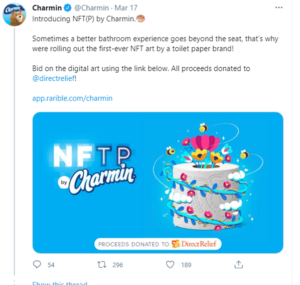Social media is a key part of any marketing strategy, but despite appearances, it’s not as easy to manage as people think. Far from simply firing off short posts at random intervals, social media strategy involves timing, brand awareness, precise copy, and a host of other strategic practices. While there’s no one surefire way to gain followers and acquire new customers, there are plenty of specific examples of what not to do.
We’ve rounded up some of the worst blunders brands can make with their social media accounts. Whether you’re selling a product, seeking engagement, or just trying to increase brand awareness, make sure to avoid these common mistakes — otherwise, you risk irreparable damage to your company’s reputation.
Become the best CRMer you can:
CRM Hack: measuring the right marketing campaign KPIs
How To: use loyalty data to power retention and reactivation
See how brands take their email deliverability to the max
Get inspired: great sports betting campaigns to follow
Tone-deaf posts
Let’s clear the air right away: sometimes, everything feels like it’s just too much. Social injustice, global pandemics, toxic political climates, struggling economies — the list goes on and on. You’d think major companies would be sympathetic to their customers’ plights, and that this sympathy would be reflected in its social media posts — but as we’ve found, that’s not always the case.
For example, in 2019, a social media rep for one of the biggest financial institutions in the world thought it would be a good idea to buy into the “lazy millennial” stereotype and make fun of young people for not having savings accounts. It went over exactly as well as you’d expect: Twitter users ripped Chase apart, and Senator Elizabeth Warren delivered the killing blow by pointing out the economic realities of stagnant wages and rising costs while big banks received billions in bailout money. Chase Bank later deleted the tweet and offered a classic non-apology, but the damage was already done.
To be clear, this doesn’t mean your brand should avoid uncomfortable topics entirely, which can also have a negative effect. If you’re addressing some social injustice or real-world tragedy, do your best to place yourself on the right side of history. Above all, having sympathy for your audience goes a long way toward making connections and engaging long-term customers.
Bad timing
Timing is everything. It can mean the difference between success and failure, or in social media terms, between a successful campaign and a cringy flop. Square Enix, the publisher behind an upcoming video game based on Marvel’s blockbuster Avengers IP, found this out the hard way with a seemingly innocuous video clip and a short message about Captain America. The video — which the Twitter post also encouraged users to download and use as a background — featured a massive statue of the deceased hero in a dystopian, drone-filled setting, with an accompanying message about how the monument was regularly defaced.
What’s so bad about that? Well, this happened in June 2020, as protests against racial injustice and police brutality were sweeping the United States and Confederate statues were being pulled down throughout the south. A message that could have set the stage for an upcoming video game instead inspired reactions that could loosely be summed up as “big yikes.”
Unlike the tone-deaf tweet from Chase Bank the previous year, this wasn’t the case of a brand misreading the room. The post was likely planned out well ahead of time as part of the overall marketing plan for Marvel’s Avengers in the lead-up to its September release date. However, the team in charge of the game’s social media neglected to reconsider the context in the wake of current events, leading to the backlash. The takeaway: even after a marketing plan has been established, social media managers should constantly evaluate how these messages could be perceived in the context of real-world events.

#Hijacking
Hashtags. Love them or hate them, those keywords and phrases attached to what our elders once knew as a pound sign can go a long way in raising engagement and brand awareness, which is why you rarely see corporate social media posts without them. But while the strategic use of hashtags can lead to successful social media campaigns, simply jumping on the bandwagon without considering its context can be devastating.
Here’s a good example of hashtag usage: tagging a post with #NationalCoffeeDay when that particular topic is trending and offering deals on coffee or other beverages. Here’s a terrible example: hijacking a hashtag used to raise awareness about domestic violence to promote… pizza.
Yes, that actually happened. Frozen pizza brand DiGiorno, which had been previously praised for its social media liveblogging of big events, tagged a post with #WhyIStayed and offered the comment “You had pizza.” The resulting outcry was well deserved, and DiGiorno apologized, stating that they didn’t know what the hashtag was about before using it. Let DiGiorno’s costly mistake be a lesson to the rest of us: Don’t use a hashtag unless you really know what it’s about and ensuring it makes sense for your brand. Anything else feels like desperate bandwagoning at best, and insensitivity at worst.
Ignoring your audience
With its established position in larger marketing strategies, it’s easy to forget the unique offering of social media. It isn’t just a bullhorn for brands to broadcast announcements and share exciting news; it’s a place where the audience can directly interact with their favorite products, for better or worse. No matter what else is going on, don’t forget about your audience.
Savvy social media users expect regular interactions on platforms like Facebook, Twitter, and Instagram, and it’s the job of a good social media strategist to rise to the challenge. Engage with followers, even if they have concerns or complaints. It may not be possible to respond to every single question or comment, but make sure your community feels heard. This is more important than ever in 2020, with coronavirus changing the marketing industry and putting relationships, empathy, and transparency at the forefront.
Managing a brand’s social media presence isn’t as easy as it sounds. Getting it right will take a lot of time and probably some trial and error, but at the very least, you now hopefully have a better understanding of how to avoid brand-destroying gaffes like the ones we’ve outlined. In almost every case, context matters, so let that be a guiding force when creating social media content.
The post 4 Social Media Mistakes That Will Cost You Customers appeared first on Post Funnel.


